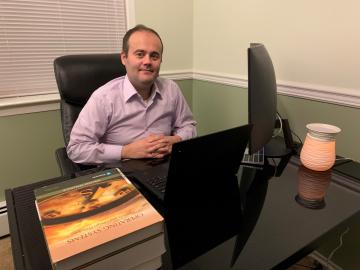
Filter News
Area of Research
- (-) Energy Science (66)
- (-) Materials (36)
- (-) Supercomputing (59)
- Advanced Manufacturing (4)
- Biological Systems (1)
- Biology and Environment (33)
- Computational Biology (2)
- Computational Engineering (2)
- Computer Science (8)
- Electricity and Smart Grid (3)
- Fuel Cycle Science and Technology (1)
- Functional Materials for Energy (1)
- Fusion and Fission (31)
- Fusion Energy (10)
- Isotope Development and Production (1)
- Isotopes (12)
- Materials for Computing (3)
- National Security (28)
- Neutron Science (25)
- Nuclear Science and Technology (38)
- Nuclear Systems Modeling, Simulation and Validation (1)
- Quantum information Science (1)
- Sensors and Controls (2)
News Topics
- (-) Artificial Intelligence (43)
- (-) Biomedical (25)
- (-) Grid (42)
- (-) Mercury (3)
- (-) Nuclear Energy (26)
- (-) Security (11)
- (-) Space Exploration (8)
- 3-D Printing/Advanced Manufacturing (91)
- Advanced Reactors (10)
- Big Data (27)
- Bioenergy (33)
- Biology (20)
- Biotechnology (6)
- Buildings (39)
- Chemical Sciences (33)
- Clean Water (10)
- Composites (19)
- Computer Science (110)
- Coronavirus (26)
- Critical Materials (21)
- Cybersecurity (14)
- Energy Storage (86)
- Environment (79)
- Exascale Computing (27)
- Fossil Energy (2)
- Frontier (32)
- Fusion (8)
- High-Performance Computing (46)
- Hydropower (3)
- Irradiation (1)
- Isotopes (14)
- ITER (1)
- Machine Learning (20)
- Materials (99)
- Materials Science (95)
- Mathematics (4)
- Microelectronics (1)
- Microscopy (31)
- Molten Salt (3)
- Nanotechnology (43)
- National Security (11)
- Neutron Science (49)
- Partnerships (16)
- Physics (34)
- Polymers (22)
- Quantum Computing (21)
- Quantum Science (34)
- Simulation (18)
- Software (1)
- Statistics (1)
- Summit (44)
- Transportation (74)
Media Contacts

A team of researchers has developed a novel, machine learning–based technique to explore and identify relationships among medical concepts using electronic health record data across multiple healthcare providers.

A study led by researchers at ORNL could help make materials design as customizable as point-and-click.

A force within the supercomputing community, Jack Dongarra developed software packages that became standard in the industry, allowing high-performance computers to become increasingly more powerful in recent decades.

University of Pennsylvania researchers called on computational systems biology expertise at Oak Ridge National Laboratory to analyze large datasets of single-cell RNA sequencing from skin samples afflicted with atopic dermatitis.

ORNL and the Tennessee Valley Authority, or TVA, are joining forces to advance decarbonization technologies from discovery through deployment through a new memorandum of understanding, or MOU.

ORNL, TVA and TNECD were recognized by the Federal Laboratory Consortium for their impactful partnership that resulted in a record $2.3 billion investment by Ultium Cells, a General Motors and LG Energy Solution joint venture, to build a battery cell manufacturing plant in Spring Hill, Tennessee.

More than 50 current employees and recent retirees from ORNL received Department of Energy Secretary’s Honor Awards from Secretary Jennifer Granholm in January as part of project teams spanning the national laboratory system. The annual awards recognized 21 teams and three individuals for service and contributions to DOE’s mission and to the benefit of the nation.

To explore the inner workings of severe acute respiratory syndrome coronavirus 2, or SARS-CoV-2, researchers from ORNL developed a novel technique.

A team of scientists led by the Department of Energy’s Oak Ridge National Laboratory and the Georgia Institute of Technology is using supercomputing and revolutionary deep learning tools to predict the structures and roles of thousands of proteins with unknown functions.

Having co-developed the power electronics behind ORNL’s compact, high-level wireless power technology for automobiles, Erdem Asa is looking to the skies to apply the same breakthrough to aviation.


